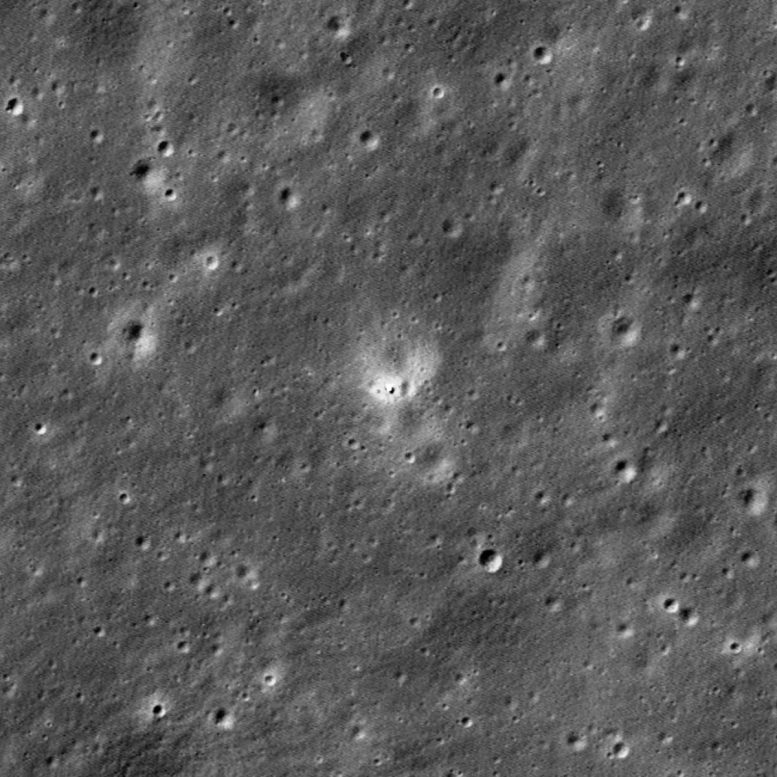
This image from NASA’s Lunar Reconnaissance Orbiter Camera shows China’s Chang’e 6 in the Apollo basin on the lunar farside on June 7, 2024. The lander is seen as the small cluster of bright pixels in the center of the image. Image is 552 meters wide; north is up. Credit: NASA/GSFC/Arizona State University
NASA’s Lunar Reconnaissance Orbiter photographed China’s Chang’e 6 on the Moon, revealing its location on a crater within the geologically rich Apollo basin, characterized by ancient basaltic flows.
On June 7, NASA’s LRO (Lunar Reconnaissance Orbiter) imaged China’s Chang’e 6 sample return spacecraft on the far side of the Moon. Chang’e 6 landed on June 1, and when LRO passed over the landing site almost a week later, it acquired an image showing the lander on the rim of an eroded, 55-yard-diameter (about 50 meters) crater.
The LRO Camera team computed the landing site coordinates as about 42 degrees south latitude, 206 degrees east longitude, at an elevation of about minus 3.27 miles (minus 5,256 meters).
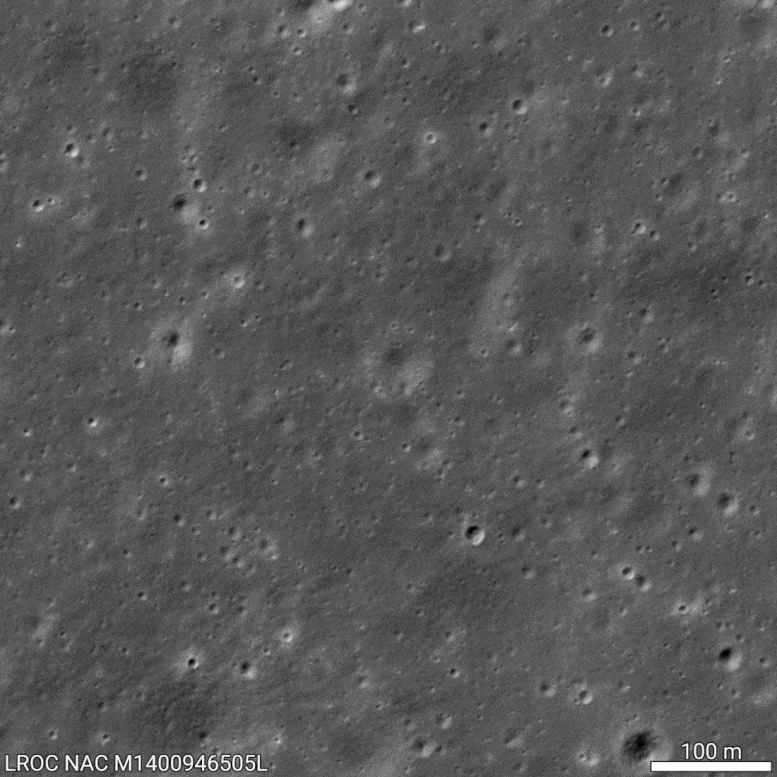
This before and after animation of LRO images shows the appearance of the Chang’e 6 lander. The increased brightness of the terrain surrounding the lander is due to disturbance from the lander’s engines and is similar to the blast zone seen around other lunar landers. The before image is from March 3, 2022, and the after image is from June 7, 2024. Credit: NASA/GSFC/Arizona State University
The Chang’e 6 landing site is situated toward the southern edge of the Apollo basin (about 306 miles or 492 km in diameter, centered at 36.1 degrees south latitude, 208.3 degrees east longitude). Basaltic lava erupted south of Chaffee S crater about 3.1 billion years ago and flowed downhill to the west until it encountered a local topographic high, likely related to a fault. Several wrinkle ridges in this region have deformed and raised the mare surface. The landing site sits about halfway between two of these prominent ridges. This basaltic flow also overlaps a slightly older flow (about 3.3 billion years old), visible further west, but the younger flow is distinct because it has higher iron oxide and titanium dioxide abundances.
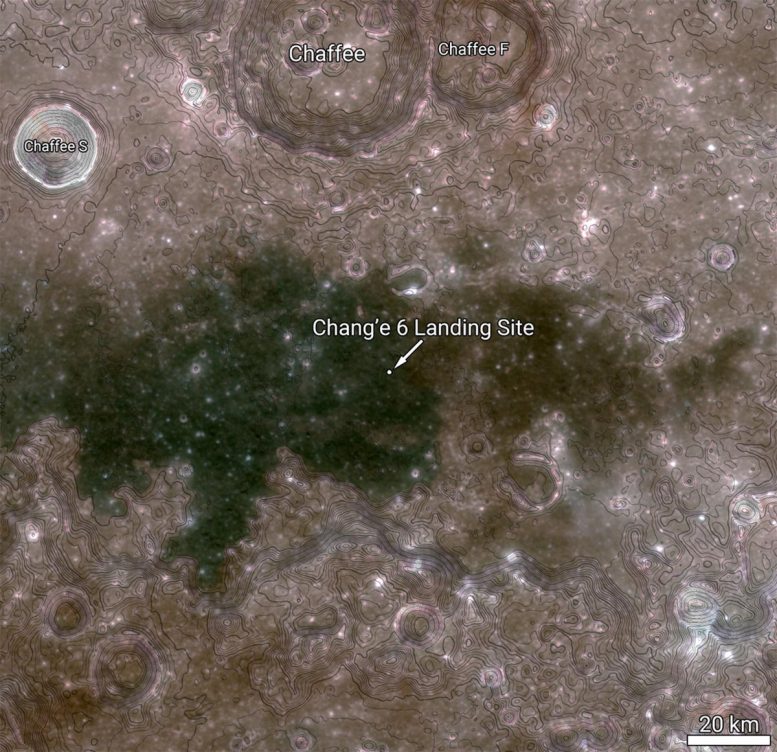
A regional context map of the Chang’e 6 landing site. Color differences have been enhanced for clarity. The dark area is a basaltic mare deposit; bluer areas of the mare are higher-titanium flows. Contour lines marking 100-meter (about 328 feet) elevation intervals are overlaid to provide a sense of the topography. The image is about 118 miles (190 km) across. Credit: NASA/GSFC/Arizona State University
NASA’s Lunar Reconnaissance Orbiter (LRO) is a pivotal spacecraft designed for detailed exploration of the Moon’s surface. Launched on June 18, 2009, the mission primarily aims to gather high-resolution imagery and data to facilitate the selection of future landing sites, assess the Moon’s mineral resources, and analyze the lunar radiation environment. Equipped with a suite of powerful instruments, including high-resolution cameras and a laser altimeter, the LRO maps the lunar terrain in exceptional detail, helping scientists understand the Moon’s geology and identify areas rich in resources like water ice.
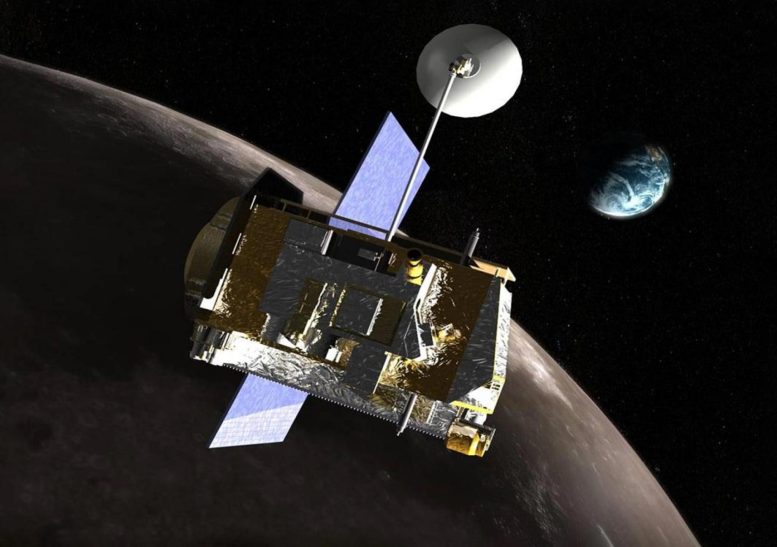
Artist’s rendering of NASA’s Lunar Reconnaissance Orbiter. Credit: NASA’s Goddard Space Flight Center
The LRO has significantly advanced our knowledge of the Moon, contributing to discoveries such as confirming the presence of water ice in permanently shadowed craters and mapping lunar surface temperatures. Instruments like the Lunar Orbiter Laser Altimeter (LOLA) and the Diviner Lunar Radiometer Experiment provide critical data on lunar topography and thermal behavior, crucial for planning future human and robotic missions. By continuing to transmit valuable data back to Earth, the LRO supports ongoing research that enhances our strategies for returning to the Moon and beyond, marking it as a cornerstone of lunar exploration technology.
Chang’e 6, part of the Chinese Lunar Exploration Program and named after the Chinese moon goddess, is a robotic lunar mission operated by the China National Space Administration. Launched from Hainan island on May 3, 2024, the mission features a lander and a mobile camera rover that touched down on the far side of the Moon on June 1, 2024. This mission, China’s second to involve sample return, included collecting lunar samples using a robotic scoop and drill. These samples were transferred to an ascender module, which then docked with an orbiter in lunar orbit on June 6, 2024, to transfer the samples for return to Earth. Additionally, the lander and rover conducted various scientific experiments on the Moon.

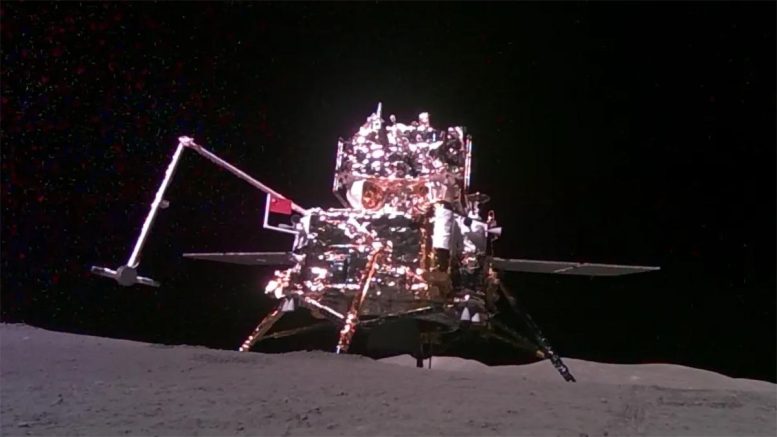








Are you sure China is on the far side of the moon? I was told in some pictures to the far side of the Moon had huge huge critters that are big enough to swallow buildings .
Sorry,. That’s huge huge craters that are really big.